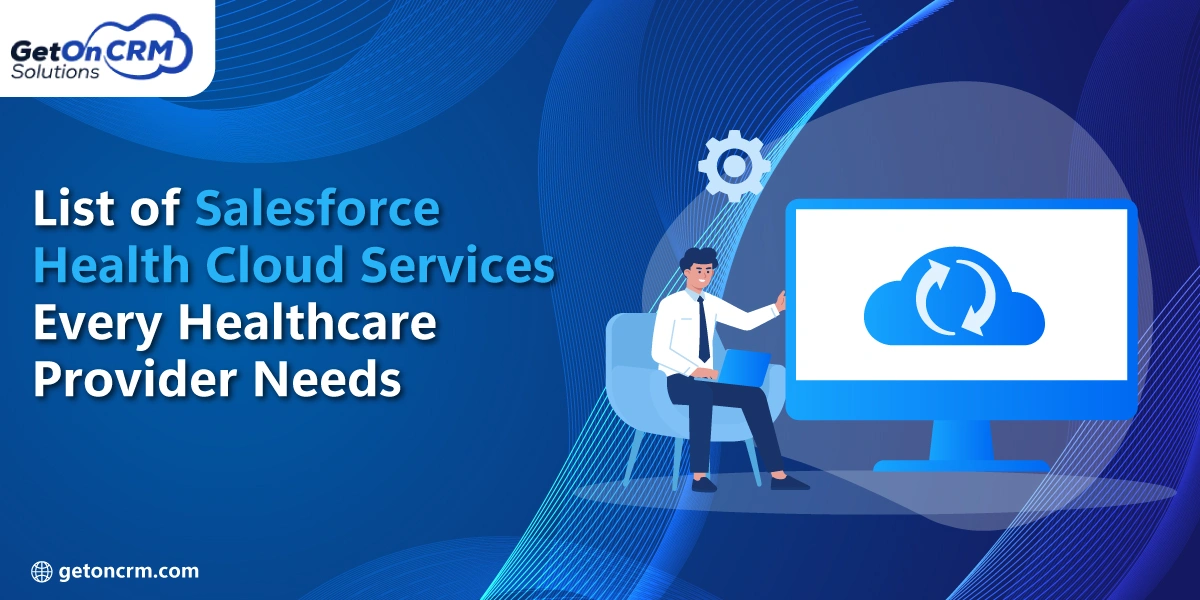Customer relationship management is very important to many businesses. Every business organization has a public front that directly interacts with customers and takes customer feedback. Salesforce is a customer relationship management platform that supports different customer-oriented processes. The Salesforce platform integration helps an organization gather customer feedback, improve sales, customer acquisition, and customer retention. It allows gathering and including customer feedback for better marketing campaigns.
While Salesforce is a cloud-based platform, it must be integrated with company systems for most of its productivity. This article discusses the necessity of Salesforce integration and Salesforce integration patterns for companies. The integration of Salesforce helps optimize different processes in the company’s operational framework.
The importance of Salesforce Integration
Salesforce is a platform for customer relationship management, but it needs to be integrated with other third-party systems for maximum productivity. Salesforce does not fulfill all the requirements for customer relationship management. Rather, it supports all prerequisites for the processes. Therefore, it needs to be integrated with the company’s infrastructure.
From order management to email systems, payment systems need the integration of Salesforce into the infrastructure with multiple systems. These practices can be completed with Salesforce integration with SAP. The Salesforce integration services from SAP are required for better management of Salesforce. For example, your company may need to transfer all the data from a legacy system to the Salesforce cloud platform. Salesforce works on its own in select situations. Integration is important in an integrated work environment where you have to update the platform.
Even with multiple social media channels, the Salesforce platform needs integration for monitoring customer interactions and drawing insights.
Also read: How To Choose A Salesforce Integration Tool That Fit You Best
Integrative approach for Salesforce
Many factors decide the approach for Salesforce Integration. The factors are as follows:
1. Maintenance of Similar Transactions
The Salesforce Integration patterns are necessary to maintain the same transactions that repeat in a cycle. The pattern influences how the same transactions are maintained in response to requests.
2. Data Management
Before determining the integration pattern, the Salesforce platform needs to figure out the data management approach. The platform needs to decide if the data needs to be managed synchronously or asynchronously. The data management approach changes from business to business.
3. Size of the Messages
Before integrating with a communication system, the system needs to figure out if the messages sent and received on the channels are small in size or large in size for management.
4. Timely Delivery
The integration approach also depends on the possibility of delays and working dysfunction in the external allied system. In such cases, the Salesforce platform needs to guarantee timely delivery of services.
While the technical steps are crucial, understanding how these integrations enhance business operations is equally important. Discover how to apply Salesforce integration strategies for better operations.
A Salesforce integration company chooses a certain integration pattern for the systems. The Salesforce integration patterns differ from business to business and systems to systems. The integration patterns have different requirements and are targeted towards different challenges faced in the integrated system. The integration pattern can be customized from system to system based on requirements and work process.
Common Integration patterns
The common integration patterns of the Salesforce Cloud platform are as follows:
Migration
The migration pattern involves transferring data from one platform to the other. Data migration can handle a large volume of data and its processing in batches. The migration pattern of system integration includes low failure cases. The data migration process is followed to transfer data and create an extensive system backup. Migration is vital for backing up enterprise-level data for its reuse in many processes by various data management tools. The Salesforce platform integration allows a company to create automated migration systems for sharing data between various organization teams.
Also read: Top Salesforce CRM Integration Tools To Look Out For In 2022
Broadcast
The Broadcast pattern from the Salesforce platform allows the broadcast of data from a single legacy system to different systems on the nodes of an internal network. The synchronization of data from single to multiple destinations happens in real-time. The way synchronization follows the ratio of 1:1.
The integration pattern is followed to simultaneously maintain an updated database over different systems in real-time. The broadcast pattern must be followed over reliable channels to reduce data loss during transfer and relay to multiple systems. The process is followed for the maintenance of customer records over multiple systems.
Aggregation
The Aggregation pattern is followed for multiple data migration processes in different systems. The pattern helps collect or aggregate data from different systems and then redirect the extracted data into a single-lane system for large-scale storage. The aggregator pattern is the most reliable if the company processes and integrates data from different systems. The aggregator pattern eliminates all the errors in data synchronization in one go.
The aggregator pattern template allows the manager to simultaneously request large-scale data sets from different systems and integrate them into meta data sets. The data sets can be condensed into report formats of choice. The pattern fosters easy data update and processing with the help of robust internal systems.
There are other integration patterns on Salesforce like Bi-directional Sync and Correlation patterns. With the choice of many integration patterns, Salesforce Cloud allows large-scale data migration and management. The diverse choice of patterns makes integration easy for businesses of any scale.
The Salesforce integration patterns can revolutionize the way businesses deal with customer data and their output. The data collected can be easily managed and used to greater impact the customer base. The customer base can be retained and expanded with the help of Salesforce. For advice on the best integration approach for your company, you have to consult integration experts on Salesforce integration services.
GetOnCRM Solutions, a Salesforce CRM consultant with many years of experience, helps you in Salesforce integration to attach a wide variety of platforms to your sales API. We can assist you with WhatsApp, Slack, Google Apps, Quip, and many more Salesforce integrations.
Frequently Asked Questions About Salesforce Integration Patterns
Why are integration patterns important for Salesforce projects?
They provide repeatable, proven blueprints (e.g. real-time, batch, event-driven), reducing risk and ensuring scalable, maintainable integrations.
What are common Salesforce integration approaches?
You’ll see real-time (API), batch (ETL), middleware/brokers, event-based, and pub/sub. Each fits different use cases and data volumes.
How do you choose the right integration pattern?
Consider data frequency, latency, error handling, scalability, and the systems you’re integrating. Matching pattern to need ensures better performance and reliability.
What challenges arise with Salesforce integration?
Issues include API limits, data consistency, error handling, schema mismatches, and dependencies. Architects must manage these carefully.
How do you maintain integrations over time?
Monitor performance, set alerts, version APIs, and implement backward compatibility. Regular audits help prevent data drift, breaks, and performance degradation.




















